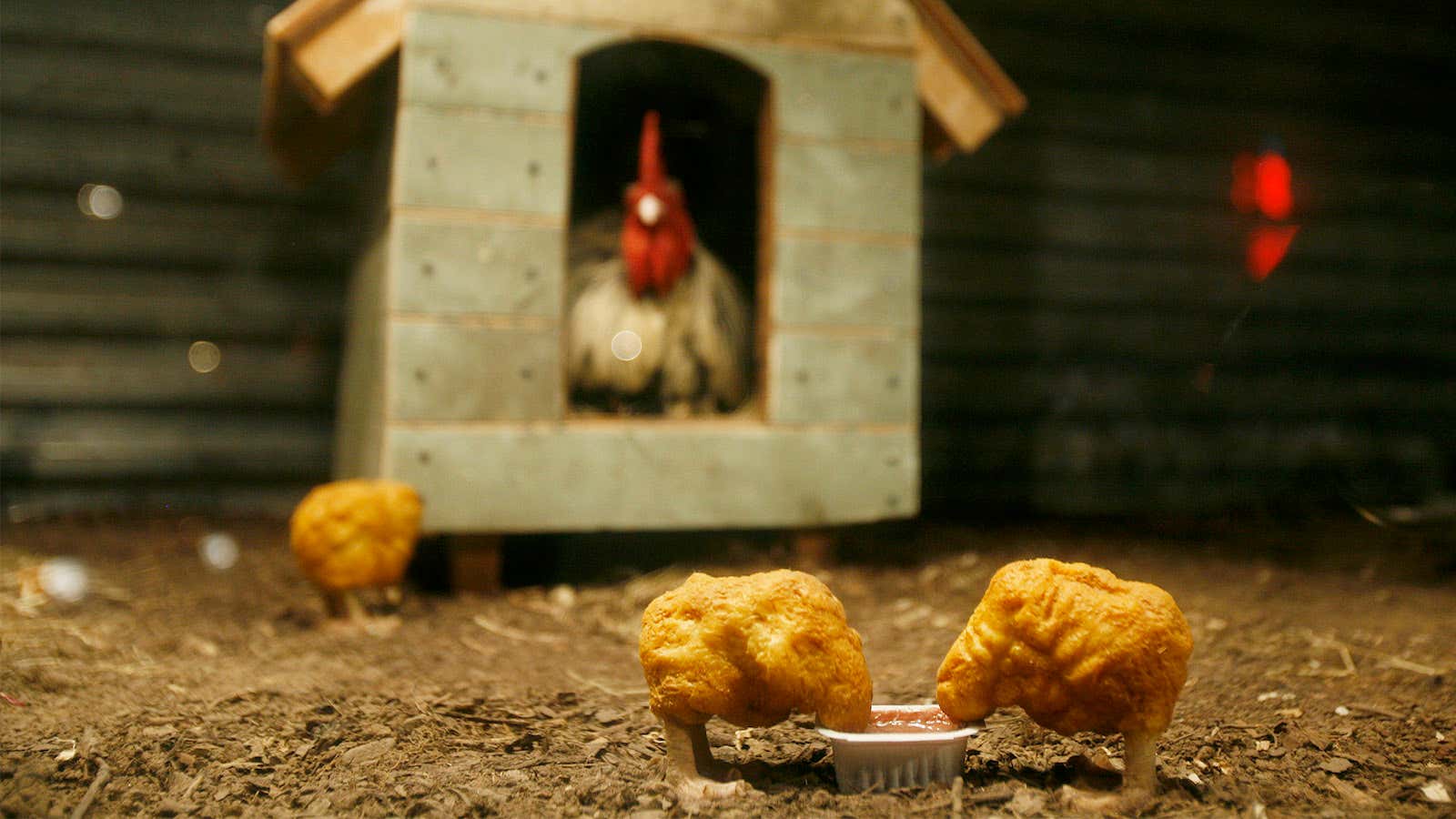Meat is composed of a stable set of ingredients. The recipe for beef differs from that for pork, but the basics remain the same: water, protein, fat, and a pinch of soluble organic material (amino acids, vitamins, carbohydrates) and minerals.
But suppose it were possible to expand the cook’s jurisdiction to include the making of the meat itself. It is clumsy to experiment with feed, breed, and slaughter mechanisms to figure out what strategies of industrial livestock production will yield cuts that will yield perfectly marbled steaks. What if we could play around—like a DJ on a soundboard—with the proteins and lipids and muscle fibers that determine the properties of the beef in question?
Behold “the carnery.” It’s a (as yet hypothetical) place where meat is made commercially via fermentation, like in a brewery. Although it doesn’t actually exist yet, the carnery is a thought experiment for a new paradigm of agriculture: cellular agriculture.
Cellular agriculture is a way to harvest products like meat, milk, and eggs from cell cultures instead of actual livestock. It is an agriculture that deconstructs the burger to its most constitutive elements and then reconstructs it as a succulent patty, identical in every way except provenance. If and when perfected, cultured meat will join the ranks of cheese, yogurt, bread, beer, and wine—venerable mainstays of the modern diet and some of the earliest applications of biotechnology. It was only after culturing milk, after all, that humans created kefir, yogurt, sour cream, and over 2,000 types of cheese.
Winston Churchill actually predicted this kind of agriculture in December 1931 in an essay he wrote for Strand Magazine. “Fifty years hence,” he said, “we shall escape the absurdity of growing a whole chicken in order to eat the breast or wing by growing these parts separately under a suitable medium.” Churchill was prescient, but overly optimistic. Not to be discouraged by a delayed timeline, a growing legion of biotechnology companies are pioneering an industry of animal-free animal products in an effort to usher in a post-animal bioeconomy.
The process of culturing meat leverages existing technologies and techniques that are currently used in tissue engineering and regenerative medicine. First, a small sample of cells are taken from an animal. The sample then proliferates in a nutrient-rich medium inside a bioreactor. After they’re done multiplying, the cells are attached to a sponge-like “scaffold” and soaked with nutrients. The resulting “cultured” meat is the same meat that would have resulted had those initial cells remained inside the animal—a bioreactor simply took the place of an animal’s body.
Cellular agriculture reimagines the way we produce and consume animal products. If meat is just a collection of muscle, fat, and connective tissues, then why raise an entire complex organism only to harvest those bits and pieces. Why not start with the basic unit of life—the cell—to make the parts you need? In fact, why stop at recreating the shape, taste, and nutritional profile of existing meats? Let’s create something new! What might we create as we culture meat? Burgers that taste like French fries? Cultured octopus patties?
Cultured meat isn’t a perversion of the natural order any more than chicken nuggets are. But even at this conceptual stage, cultured meat is as entangled in the social, political, and economic relations as is the meat we eat today. We should pay heed to science fiction and resist the urge to think that cellular agriculture can save the world. The very problems that can seem “solvable” by cultured meat—global food shortages, climate change, water scarcity—expose the absurdity of the proposition that meat is simply water, protein, fat, and tissue. Meat is the stuff of global trade agreements and agricultural subsidies, of backfiring technological interventions from decades past and “objective” calculations proved wrong.
Agriculture has always been a locus of innovation and an early adopter of avant-garde technologies. Cellular agriculture is a perfectly natural fit in a long tradition of revolutionary agricultural technologies. We should treat it accordingly.
